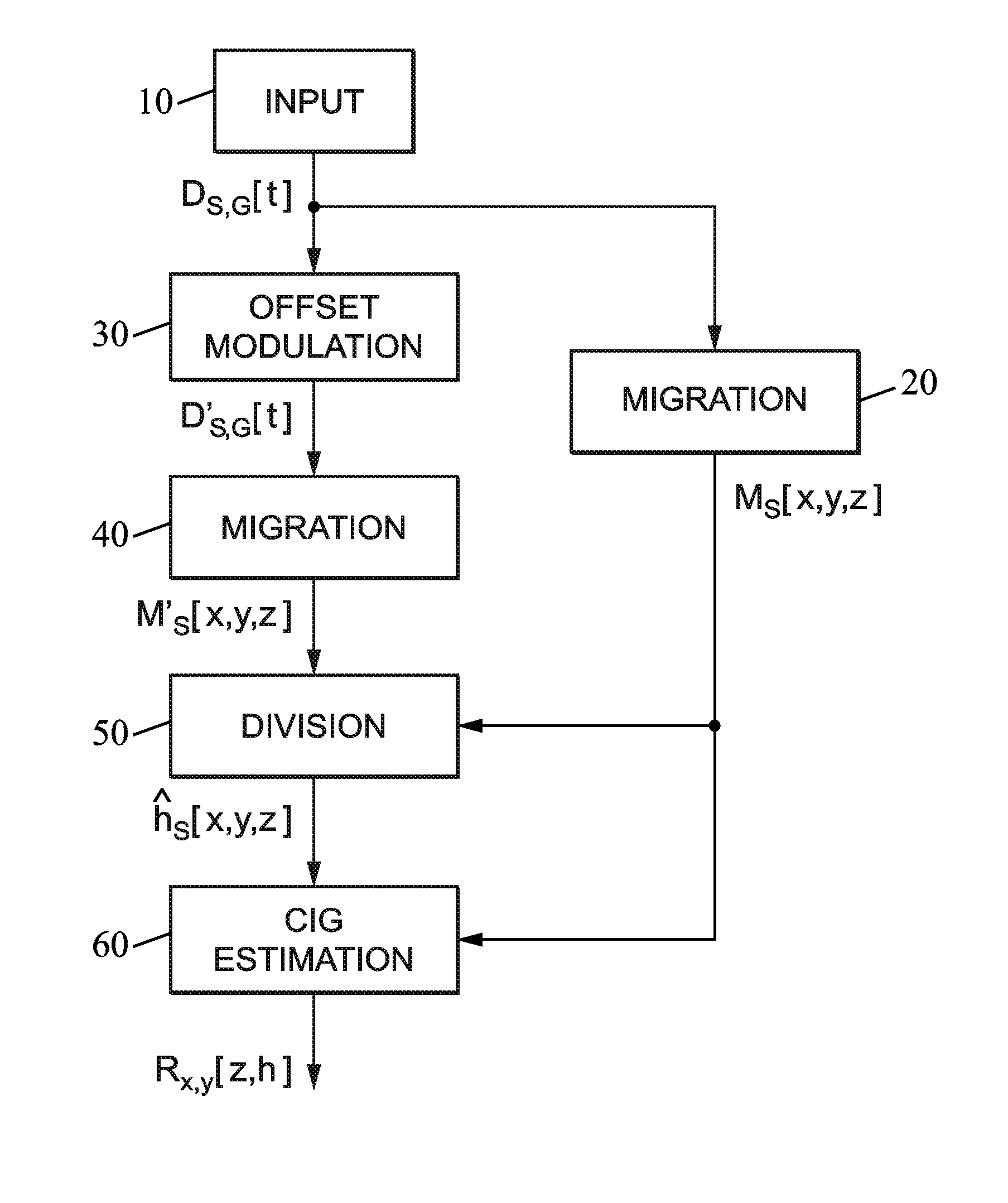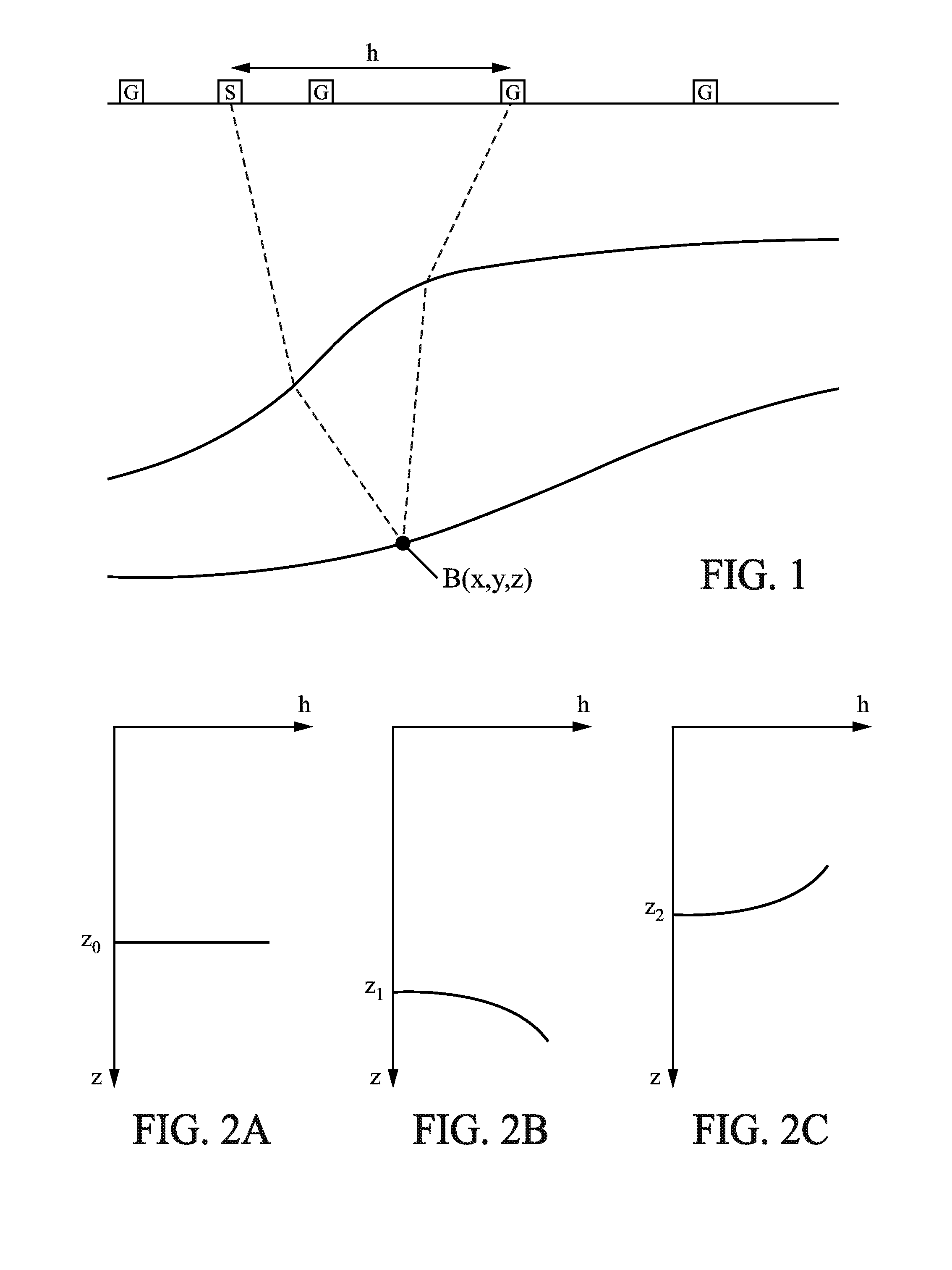Method of processing seismic data by providing surface offset common image gathers
a technology of surface offset and common image gather, which is applied in the field of processing seismic data, can solve the problems of affecting reducing the accuracy of seismic data, so as to improve the propagator, reduce the computational effort, and facilitate the interpretation of the migrated results
- Summary
- Abstract
- Description
- Claims
- Application Information
AI Technical Summary
Benefits of technology
Problems solved by technology
Method used
Image
Examples
Embodiment Construction
[0036]One way to obtain surface offset CIGs for WEPSDM or RTM migration methods would be to compute one migration per shot and per trace, requiring a number of migrations equal to the total number of shots times the average number of receivers per shot. This is clearly impractical for the time being, especially for 3D cases. Instead, it is proposed to use a more feasible solution, namely attribute migration, also called double migration.
[0037]In the double migration method as introduced by N. Bleistein (“On the imaging of reflectors in the earth”, Geophysics, Vol. 52, No. 7, July 1987, pp. 931-942), two migrations are computed with the same data, the second one involving a migration operator multiplied by the specular reflection angle. The division of the two migrated images then gives the specular angle along the reflectors.
[0038]A similar method can be used with the surface offset instead of the specular reflection angle as the migrated attribute. The migration can be performed us...
PUM
 Login to View More
Login to View More Abstract
Description
Claims
Application Information
 Login to View More
Login to View More - R&D
- Intellectual Property
- Life Sciences
- Materials
- Tech Scout
- Unparalleled Data Quality
- Higher Quality Content
- 60% Fewer Hallucinations
Browse by: Latest US Patents, China's latest patents, Technical Efficacy Thesaurus, Application Domain, Technology Topic, Popular Technical Reports.
© 2025 PatSnap. All rights reserved.Legal|Privacy policy|Modern Slavery Act Transparency Statement|Sitemap|About US| Contact US: help@patsnap.com



